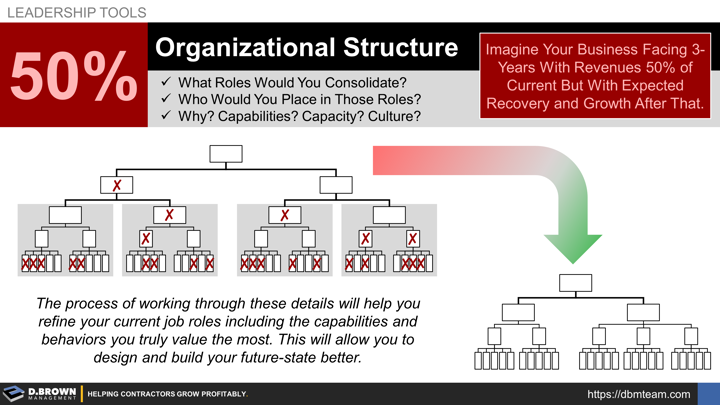This is the third part of your organizational planning and one of the most valuable exercises you can undertake, though it can, and likely should, become a bit emotional. For this reason, it's highly recommended that the entire management team approaches it with maturity and discretion, alongside the guidance of an experienced but unbiased third-party facilitator.
Going through this exercise with rigor will help you identify, prioritize, and reinforce what is most important for your business. This will guide everything from your management systems to your growth plans, as well as talent selection and development.
The Scenario: Imagine you are facing a major downturn in the economy. You expect that there will be at least three years where your revenues will be 50% of current volume and margins will be tighter. You also expect recovery and rapid growth after that, just like the 2008 recession.
The Exercise:
- What roles would you consolidate?
- Who would you place in those roles?
- Why? Capabilities? Capacity? Culture?
The Outcomes:
The process of working through these details will help you refine your current roles, including the capabilities and behaviors you truly value the most. This will allow you to design and build your future-state more effectively.
You will likely find some immediate changes to take action on in terms of structure, roles, or people.
You will also be better prepared to make necessary changes early if you see signs of a weakening economy and are unable to mitigate them.
We have seen groups self-facilitate all three components of organizational planning and development. We've also been part of facilitating many sessions. We will share freely anything we've learned that will help you. Please contact us to talk about your specific situation.
- Current State
- Future State (2X)
- Future State (50%)
These are all just part of developing a strong Talent Value Stream (TVS) that enables every other aspect of your vision and business model.

